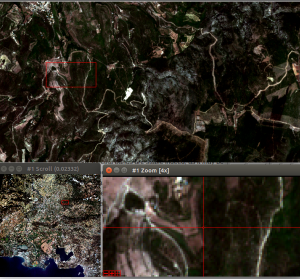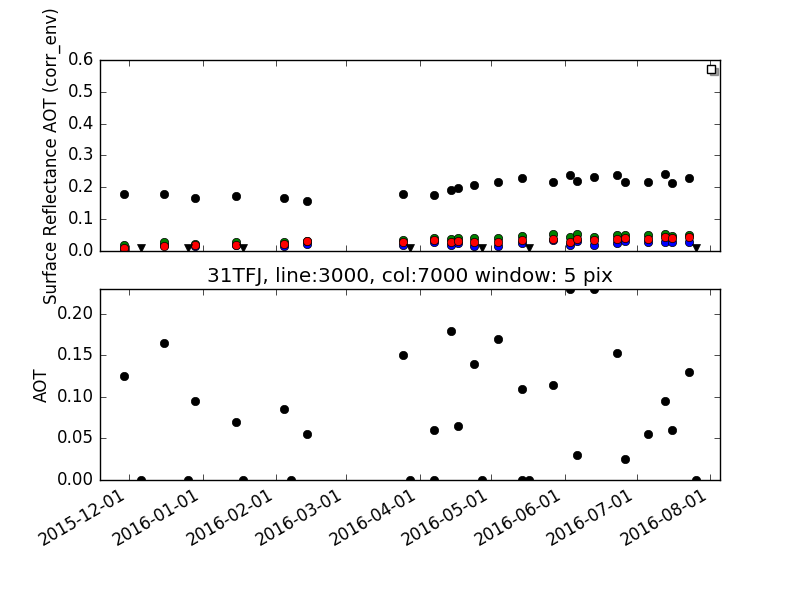As MACCS was used to produce a large amount of images (all the images acquired over France), we were able to make some more validation tests, such as checking the surface reflectance stability. To do that, the region of Arles in Provence (France), tile 31TFJ, is a good site, with a lot of clear skies, and the chance to be observed from two different orbits by Sentinel-2. Here is an example for a coniferous forest (Pines probably): The reflectances of the 4 Sentinel-2 10m spectral bands are stable indeed, as it may be seen on the top plot, while the bottom plot shows the variation of the aerosol optical thickness measured by MACCS. You may have noticed that towards the summer, we can see a few couples of points, acquired 3 days apart, with small differences in surface reflectance, noticeable in the NIR infrared (black dots). These differences are probably due to directional effects as the observation from two different orbits are made with different viewing angles. These effects may be corrected. We do that for instance in our level 3 products.
we were able to make some more validation tests, such as checking the surface reflectance stability. To do that, the region of Arles in Provence (France), tile 31TFJ, is a good site, with a lot of clear skies, and the chance to be observed from two different orbits by Sentinel-2. Here is an example for a coniferous forest (Pines probably): The reflectances of the 4 Sentinel-2 10m spectral bands are stable indeed, as it may be seen on the top plot, while the bottom plot shows the variation of the aerosol optical thickness measured by MACCS. You may have noticed that towards the summer, we can see a few couples of points, acquired 3 days apart, with small differences in surface reflectance, noticeable in the NIR infrared (black dots). These differences are probably due to directional effects as the observation from two different orbits are made with different viewing angles. These effects may be corrected. We do that for instance in our level 3 products.
